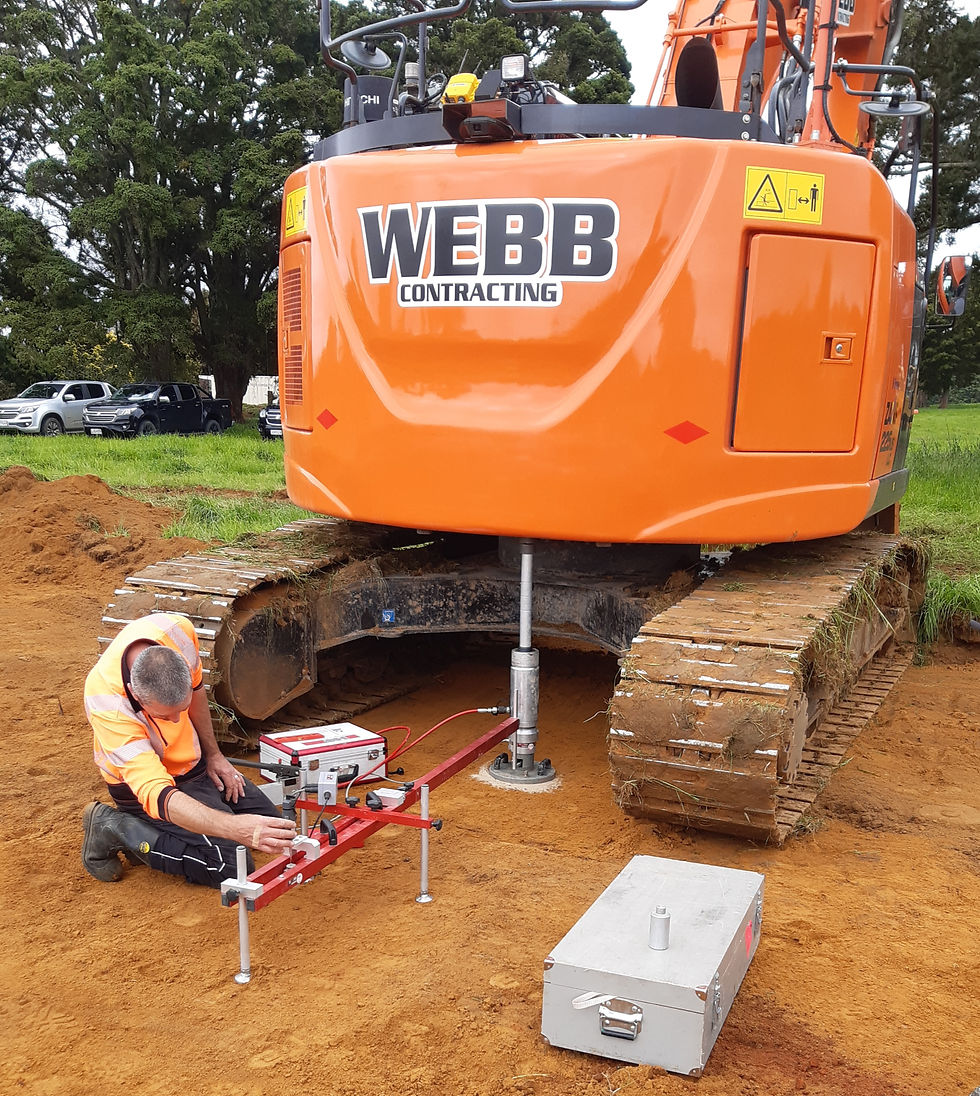Static Plate Load Testing
- theo1583
- Jul 9, 2024
- 2 min read
Updated: Sep 12
Saving Time, Reducing Risk, and Building with Confidence

Why does static plate load testing matter?
On any project, whether roading, railway, subdivisions, or crane platforms, unexpected ground performance is one of the biggest risks to programme and cost. The static plate load test (PLT) is one of the few tests that directly measures how the ground behaves under representative loads, rather than relying on assumptions, correlations, or lab proxies. Put simply: a rigid steel plate is loaded on the ground surface while the settlement is measured. The results tell you exactly how stiff and strong the soil is for real-world conditions.
Common concerns we hear:
“It is too expensive to mobilise.”
“The setup looks complicated.”
“I am not sure what we will actually get out of it.”
“Interpreting the results feels like a black box.”
These are all valid concerns. The reality is that with the right preparation, the test runs smoothly, the data is clear, and the payback in risk reduction far outweighs the upfront cost. A failed platform, over-designed foundation, or delayed project costs far more than doing the test right.
Where PLTs shine in practice:
Verifying crane and piling rig platforms
Roading and railway formation testing
Subdivision earthworks QA
Testing for remote infrastructure such as wind farms
In all of these, the test gives contractors and engineers confidence that the platform or foundation will perform as intended.
Seven key questions for scoping a PLT
Which testing standard will you follow?
We recommend DIN 18134:2012, as it provides direct calculation of stiffness (Ev1, Ev2), subgrade modulus (K), and even estimated CBR.
What plate size is required?
Depends mainly on particle size: multiply max particle size by 4 to select the right plate (e.g. 300mm, 600mm, 762mm).
What plant is available as reaction mass?
At least 15–25 tonnes is needed to work with a 10-ton jack safely.
What stress levels should be applied?
DIN gives standard pressures, but a Chartered Professional Engineer can tailor the protocol if higher stresses are needed.
How many loading steps?
At least 14 steps (6 loading, 3 unloading, 5 reloading steps) for reliable Ev1/Ev2 values.
What is the test purpose?
Soil characterisation, compaction QA, CBR estimation, or bearing capacity assessment.
Who is overseeing QA/QC?
Always engage an IANZ-accredited lab with digital kit and trained staff.
Our experience:
Since 2017, Cook Costello has successfully delivered thousands of plate load tests across New Zealand. Our geotechnical engineers and IANZ-accredited partners ensure every test is scoped, executed, and interpreted correctly, saving clients time, money, and headaches.
Planning crane pads, roading, or subdivision earthworks?
Talk to our geotechnical team about scoping a PLT. The right advice upfront means no wasted time on the day and no costly surprises later.
Contact Cook Costello’s Geotechnical Team today and build with certainty.



